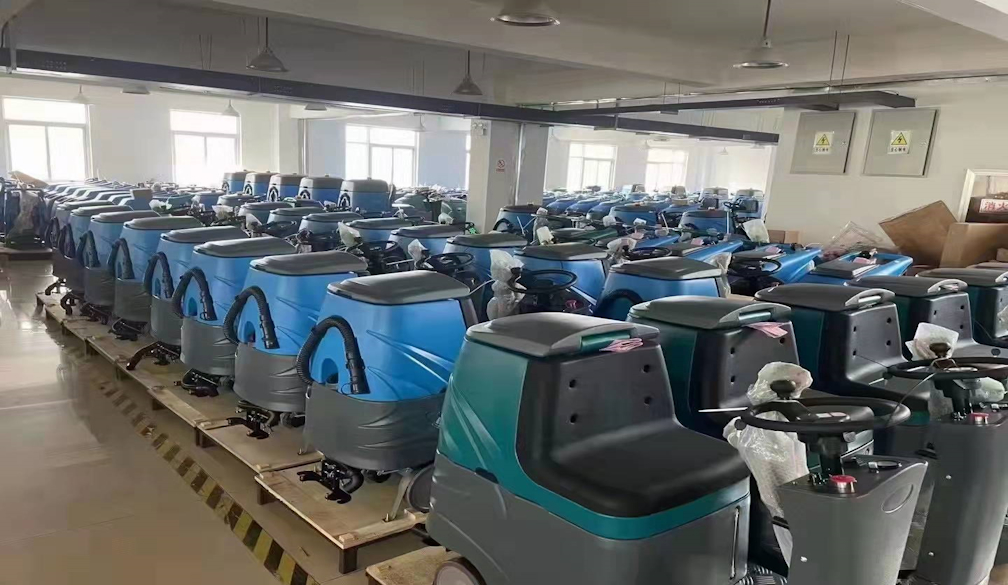Ride-On Sweepers and LEED Certification: A Sustainable Partnership

In todays society there is a growing focus, on the construction and maintenance of buildings. One important aspect of building practices is achieving LEED certification. This certification sets standards for design, construction and operation. However it's important to note that sustainability goes beyond the design and construction phase. It also includes the maintenance and operation of buildings.
Interestingly when it comes to building maintenance sustainability, s are often overlooked. These specialized cleaning equipment play a role in both maintaining cleanliness and protecting the environment. In this essay we will explore how s collaborate with LEED certification to promote sustainability in both buildings and their surrounding environments.
A Brief Overview of LEED Certification
Before diving into the role of s in LEED certification, let’s take a moment to understand what LEED certification entails and why it holds significance.
LEED stands for Leadership in Energy and Environmental Design. It is a recognized rating system developed by the U.S. Green Building Council (USGBC). The primary goal of LEED is to establish standards for building practices across various aspects such as design, construction and ongoing operations.
Achieving LEED certification showcases a buildings commitment, to practices by prioritizing efficient resource use while minimizing its carbon footprint. It's worth noting that this certification isn't limited solely to construction projects; existing buildings can also earn LEED certification by meeting sustainability criteria related to their operations and maintenance.
Sustainability Challenges in Building Maintenance
These criteria cover a range of factors that affect the performance of buildings including how they use energy conserve water maintain air quality and manage waste.
Maintaining practices, in building maintenance can be challenging, even though there is focus on designing and constructing buildings with sustainability in mind. If not approached sustainably maintenance activities can have effects on the environment and economy. Here are some key challenges related to sustainability in building maintenance;
1. Energy Consumption
The heating, cooling and lighting systems in a building contribute to its energy usage. Inefficient HVAC systems, outdated lighting fixtures and improper maintenance practices can result in energy consumption.
2. Water Usage
Water is a resource that needs to be conserved. Excessive water consumption can strain water supplies. Issues like pipes, inefficient irrigation systems and wasteful water practices all contribute to water waste.
3. Indoor Air Quality
Poor indoor air quality can have impacts on the health of building occupants. It's crucial to maintain well-ventilated spaces for the well-being of those
4. Waste Management
Generating waste is a part of building maintenance; this includes both waste and hazardous materials. However, it's important to dispose of waste to prevent harm to the environment.
5. Exterior Maintenance
Keeping the exterior of a building well maintained is vital not for its aesthetics but also, for its long-term durability.
However, using methods, for maintenance can be quite costly and harmful to the environment.
The Role of Ride-On Sweepers
Lets talk about the role of s also known as street sweepers or industrial sweepers. These specialized machines are designed to thoroughly clean both outdoor spaces. They play a part in addressing sustainability challenges in building maintenance.
Dust and Debris Removal
Firstly s come equipped with brushes and vacuum systems that effectively eliminate dust, dirt, leaves and other debris from surfaces. By keeping areas clean they contribute to improved air quality while reducing the need for water cleaning methods.
Water Conservation
Moreover, some s are designed with water recycling systems that minimize water usage during the cleaning process. This innovative technology ensures use of water resources addressing the challenge of water conservation.
Indoor Air Quality
Indoor environments such as warehouses, factories and parking garages greatly benefit from s well. These machines help maintain air by capturing dust particles and other particulate matter. This contributes significantly to air quality which is crucial, for the health and well-being of people occupying these spaces.
Waste Reduction
Lastly by cleaning areas s prevent waste accumulation and litter buildup.
Energy Efficiency
Taking an approach, like this helps to decrease the waste produced and minimizes the need for extensive clean-up efforts. Energy efficiency is also an aspect when it comes to s. They are designed to be efficient allowing them to cover areas quickly and reducing the time and energy required for cleaning. This aligns well with LEEDs focus on energy practices in building maintenance.
How Ride-On Sweepers Contribute to LEED Certification
Now lets delve into how the use of s can contribute to LEED certification. When it comes to LEED Existing Building Operations and Maintenance (LEED EBOM) buildings must meet criteria related to operations and maintenance in order to be certified.
LEED Existing Building Operations and Maintenance (LEED EBOM)
The use of s can help meet several of these criteria, including Sites, Indoor Environmental Quality and Water Efficiency. For example, using a ride-on sweeper for cleaning can effectively reduce pollution in bodies of water which contributes towards earning Water Efficiency credits.
Improved Indoor Air Quality
Another benefit is that s equipped with filtration systems help maintain indoor air quality. This is a factor considered in LEED certification since buildings, with indoor air quality scores can earn additional LEED credits.
Sustainable Purchasing and Waste Reduction
Additionally, LEED certification encourages purchasing practices which aligns well with using ride-on sweepers for building maintenance tasks.
Investing in ride-on sweepers that have eco features and are built to last showcases a commitment, to sustainability by building managers. On top of that using these machines regularly helps prevent the accumulation of waste which contributes to LEEDs Waste Reduction and Sustainable Purchasing credits.
Energy Efficiency
Ride-on sweepers are specifically designed to be energy efficient. Their efficient cleaning processes reduce the need for cleaning cycles ultimately saving energy and valuable resources. This aligns perfectly with LEEDs goal of reducing energy consumption.
Water Efficiency
Certain ride-on sweepers incorporate water recycling systems that minimize water usage during cleaning operations. This not conserves water. Also falls in line with LEEDs Water Efficiency credits.
Sustainable Site Management
Maintaining debris free spaces through the use of ride-on sweepers can significantly contribute to a comprehensive sustainable site management plan, a crucial aspect for achieving LEED certification.
Innovation in Operations
LEED. Rewards practices in operations and maintenance. By implementing ride-on sweepers as a maintenance solution it shows an approach to building management practices.
Best Practices for Incorporating Ride-On Sweepers into Building Maintenance
To effectively harness the benefits of ride-on sweepers, for both achieving LEED certification and ensuring building maintenance consider implementing the following best practices;
Select the Right Equipment
Here are some tips, on choosing the equipment for cleaning specifically ride-on sweepers. It's important to select sweepers that're suitable for the size and type of space you need to clean. Look for features like water recycling systems, filtration and energy operation.
Regular Maintenance
To ensure performance it's crucial to keep your sweepers maintained. Regular maintenance not extends their lifespan. Also helps reduce energy consumption and waste.
Training
Properly training your staff on the efficient operation of ride-on sweepers is essential. This will maximize their effectiveness while ensuring safety.
Sustainable Purchasing
When purchasing ride-on sweepers prioritize models that are manufactured sustainably and have a service life. This aligns with LEEDs Purchasing credits.
Monitor Performance
Continuously monitor the performance of your sweepers. Track their impact on sustainability metrics. Use this data to make improvements and optimize cleaning processes.
Collaborate with LEED Professionals
It can be beneficial to collaborate with professionals experienced in LEED certification. They can help ensure that your use of ride-on sweepers aligns with LEED criteria. Can earn credits.
Conclusion
Incorporating ride-on sweepers into building maintenance practices can contribute to sustainability efforts. Boost LEED certification, for both existing structures.
Building managers can improve the cleanliness of their properties. Show their commitment, to the environment by investing in ride-on sweepers that have eco features and effective cleaning technology.
In today’s world, where sustainability and green architecture are gaining importance s are becoming increasingly crucial for maintaining LEED certified buildings. These sweepers play a role in reducing energy consumption conserving water improving air quality and minimizing waste all of which align, with LEED certification requirements. It is essential for builders and managers to recognize the value of these machines in creating and sustaining buildings for a greener future.
